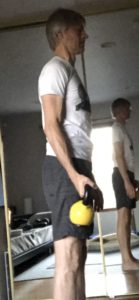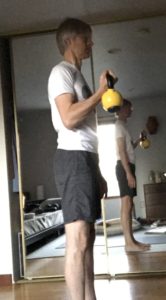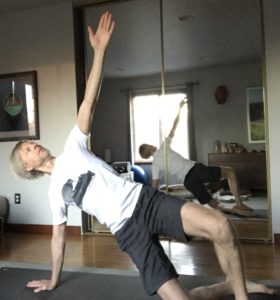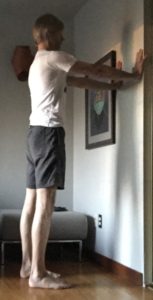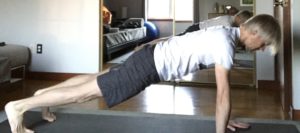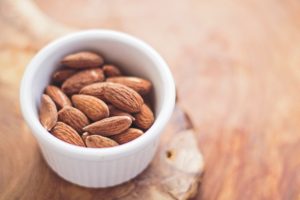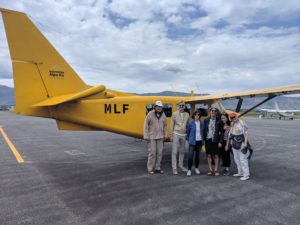A Case for Yoga: Improving Strength, Mobility and Overall Health
As a yoga teacher I’ve been advocating for a proactive effort to increase flexibility in the body for more than 2 decades. Yoga is generally seen these days as a valid way of increasing flexibility, but not necessarily one that offers the complete complement of physical benefits regarded as essential for overall health and wellness. For instance, many yoga students feel they need to engage in other activities for cardiovascular exercise, such as spinning, Zumba or running, to keep themselves healthy. Yoga, it appears for these folks, is not enough.
A decade or so ago when yoga was still “the new kid on the block” in the fitness industry, it enjoyed a sort of “cure for everything” status that temporarily shielded it from the responsibility to deliver on that promise. Now that yoga has slipped from it’s peak of popularity into the ever expanding menu of fitness options, it is held to the same standards that other types of “exercise” are and its strengths are weaknesses as an exercise form, depending on the type of yoga or the skill level of the instructor, have become more commonly known and accepted.
One strength of yoga that appears to be gaining ground in the scientific community and with the public is its efficacy in reducing the effects of stress and as a contributing factor to overall health and well being. A 2012 National Health Interview Survey (NHIS) found that, among the people surveyed who practiced yoga, 94% said they did so for “wellness-related reasons – such as general wellness/disease prevention or to improve energy,” with 82% of the respondents saying that it “improved their overall health” and 86% saying yoga reduced their stress.
I should point out here that the benefits of yoga reported above, along with other benefits reported for its positive effects on back pain, sleep, menopause, diabetes and other chronic disease and weight loss are mainly anecdotal. There is limited scientific support for nearly all of the claims made in yoga magazines and websites. But for some of these claims, such as yoga’s efficacy in building strength, the benefits are clear and undeniable.
The fact is, yoga postures done correctly place mechanical loads on our muscles, ligaments and bones in controlled and specific ways, and this type of loading, as dictated by the laws of our physical universe and the biological nature of our tissue, increases the load bearing capacity (ie- strength) of these tissues quite effectively. Without a doubt, yoga makes us stronger.
So if there is at least some evidence, even though mostly anecdotal, that yoga is good for stress reduction and overall health and well being, and clear evidence that yoga can be an effective way of building strength, then I would argue that latter is closely related to the former. The fact that yoga helps build strength is the reason that it helps with stress reduction and overall health.
This is because our overall health is largely defined by the health of our tissues. What are we but a highly complex arrangement of tissues and extra-cellular fluid (leaving aside the mind and the soul which are a subject for another time). We cannot be healthy and have a significant amount of unhealthy tissue in our body. Conversely, our overall level of tissue health is directly related to our overall health in general. The healthier our tissue is, the healthier we are.
So what exactly does strength have to do with tissue health? The answer lies in understanding our tissues on both macro and microcosmic levels. If for instance I want to strengthen my legs and hips I might choose to do more standing postures. The mechanical loads these postures place on the muscles and other tissues in my legs and hips will help these tissues handle loads better, thereby making them stronger. But what happens to the individual cells in the various tissues in my legs? I would argue that these same postures also improve the strength of the individual cells in the tissues that make up my legs and hips. This is due to a phenomenon knowns as mechanotransduction.
Mechanotransduction occurs when a mechanical stimulus is converted into a set of biochemical reactions and corresponding a cellular response. This cellular response can vary depending on the type of cell and stimulus, but generally involves enhanced gene expression and positive physical changes to the cell. Scientifically, mechanotransduction is a concept still in its infancy in terms of study and understanding, but the studies that have been done suggest that mechanical loads on the microcosmic level mimic those on the macrocosmic. That is, mechanical loads that make our muscles and bones stronger also make our cells “stronger” in the sense that they improve their adaptiveness and enhance their functional role in our bodies.
Therefore I’d suggest that “weight bearing exercise”, which is basically deliberate mechanical loading of our tissues, not only has the potential to build strength and resiliency in that tissue but also, as a result of mechanotransduction, similarly loads our cells and stimulates greater responsiveness and resiliency on the cellular level, improving the health of those cells, the tissues they make up and our overall health in general.
I place “weight bearing exercise” in quotations here because it can and does mean more than it’s common interpretation suggests. Sitting for example, can be a kind of “weight bearing exercise” in the sense that it places mechanical loads on the tissues of our hips and legs and, if done in the right way, has the potential to make them stronger and more resilient. On the other hand, sitting can and often is counterproductive in this regard because it is not done in the right way, or is done for too long, and will in this case damage tissue health by limiting mechanotranscduction and impairing tissue health.
This brings me back to the importance of flexibility, or as I prefer to think of it, mobility. Having good flexibility means having functional mobility which is the ability to mobilize the body in a variety of ways. Mobility allows me to move more of my joints and tissues through their various ranges of motion and this means a wider and more varied distribution of mechanical loads to more of my tissues. A major benefit of mobility therefore is the stimulation of mechano-transduction in more of the cells in more of my tissues and an improvement in the healthful expression of those cells and those tissues. Floor sitting done properly, for example, can be and effective way of improving the mobility of the hips, knees and ankles and can therefore promote the health of the tissues in the lower half of the body.
A less obvious benefit to functional mobility is the enhancement of my cardiovascular system. Improved and varied mobility of the body generally improves the mobility and more specifically the elasticity of my arterial system, helping to normalize blood pressure and reduce the effects of various types of stress on vessel walls. This particular benefit of functional mobility, which incidentally is facilitated rather well by regular and correct practice of yoga, improves the responsiveness and resiliency of my cardiovascular system and prevents chronic diseases related to it.
I’ve tried here to make a case for yoga as having the potential to be as complete as any other form of “exercise” for promoting and maintaining health. It’s reputation for helping mainly with flexibility and stress is a very limited view that fails to tell the whole story of its full potential. This potential, to literally enhance and maintain our tissue health on the cellular level, is open to anyone willing to spend the time and energy to learn it.


